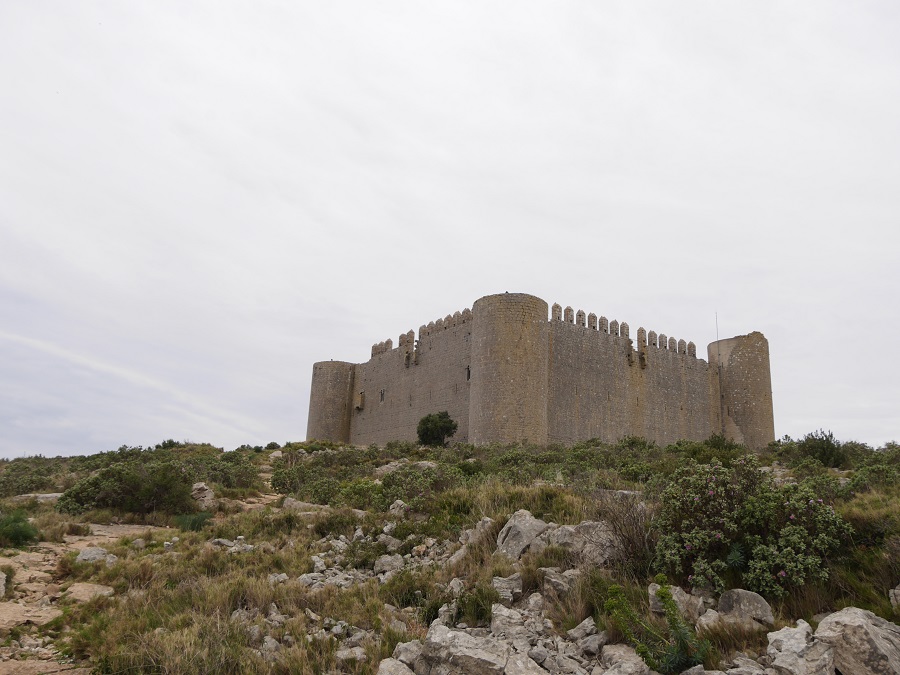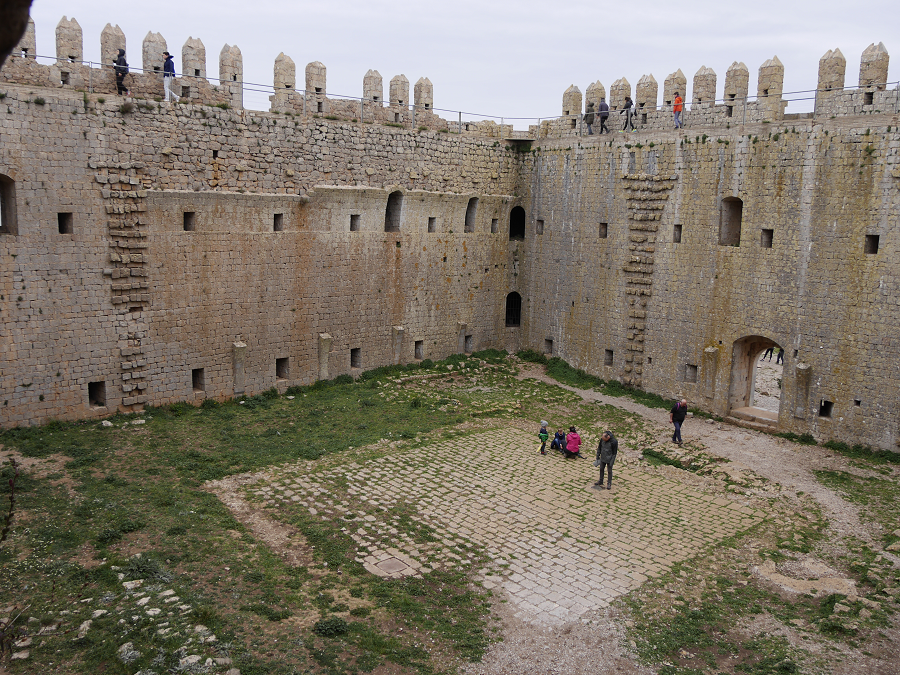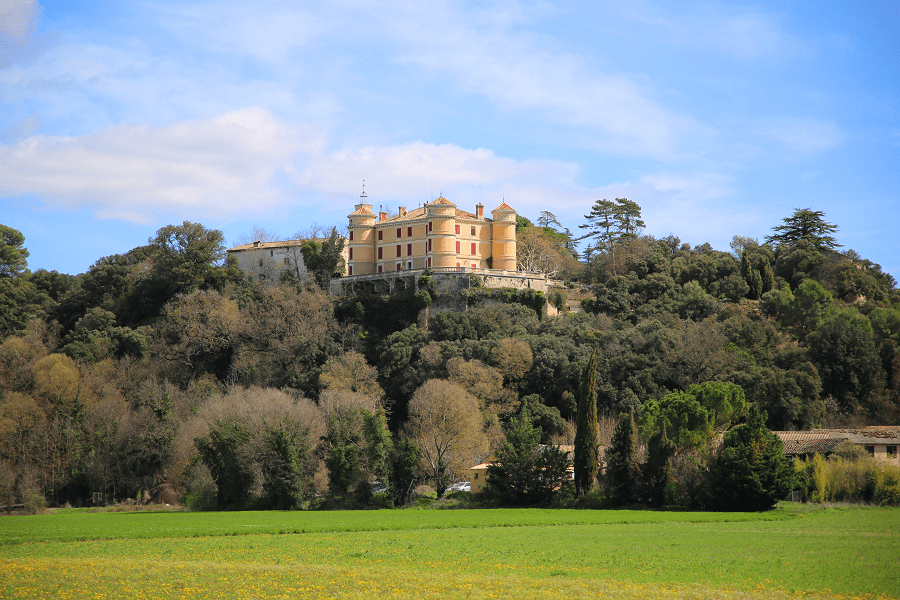The castle of Montgrí (cat. El Castell de Montgrí, also called Torroella de Montgrí or Santa Caterina) is a military fortification of the municipality of Torroella de Montgrí (Baix Empordà, Girona province, Catalonia, Spain) declared a cultural asset of national interest. It was built between 1294 and 1301 by King James II, at the top of the Montgrí massif in the municipality of Torroella de Montgrí, Baix Empordà.
Montgrí is a small limestone mountain, 315 m high and located 6 km away from the sea. From its top you can see the plain of Empordà up to Canigó. The peak at 303 meters, is included in the list of the 100 summits of the FEEC.
It marks the trend imported from the east after the first crusades in the Holy Land during the 12th and 13th centuries. It is a large rectangular building, with round corner towers and tall crenellated walls. The construction was never finished. Montgrí Castle rises on the summit of the Montgrí hill, at 315 meters. It has a square floor plan with four cylindrical towers on the corners. The building has four facades of similar structure: crowned with merlons, machicolations and embrasures.
The entry gate opens on the south façade. It is a semicircular arch portal with large stone voussoirs. Four single windows (one on the south façade, two on the east and one on the west) break the solidity of the walls, they are crowned with a round arch, and with interesting capitals. The interior, despite being unfinished allows to deduce its general configuration. The towers access doors are on the corners, the ones on the ground and first floor correspond to the same level at which the embrasurers around the walls are located and the door on the upper floor is at the level of the wall patrol path. A paved square of the earth delimits the space destined to a central patio, around which the dependencies must have been distributed, a fact confirmed by the remains of the arcs bases that can still be seen.
History
It is a fortress built between 1294 and 1302. The origin of the construction of the Montgrí castle is in the rivalry between the king James the Just and the counts of Empúries. The construction was started by Bernat de Llabià, governor of Torroella, in 1294, as a control point for a confrontation between James the Just and Pons V the Count of Empúries. The date of the start of the works follows from the writing of James II to his procurator Bernat de Llevià, a neighbor of Torroella, in which the king ordered him with the administration and direction of the castle works. The royal income of Torroella and tax on the Ullà and Albons bulls were dedicated for the construction. Three years later, the same Bernat de Llevià received custody of the castle.
The works were interrupted in 1301 before the construction could be finished, due to the consolidation of the power of the county of Barcelona against the county of Empúries. The loss of importance of the Empúries county house made the completion of the work unnecessary, although the date of interruption is known exactly. The last records from the castle date back to 1413, and they relate to the Levià family. Later, in the 20th century, abandonment had led the building to a situation of worrying degradation. On November 10, 1985, a cleaning day was carried out by the community in order to raise awareness of the official bodies to the need to restore it. The Generalitat, the Provincial Council and the City Council commissioned a consolidation project and subsequently, the necessary budget was approved to carry it out.
The castles of Bellcaire and Montgrí still look at each other challenging, both witnessed the bloody struggle of the monarchy against feudal power. The struggle ended with the incorporation of the county into the crown, after causing the ruin of the region and the deviation of the Ter course from the north plain of Montgrí to the southern plain, in the first half of the 14th century. This deviation caused the formation of the continental dunes of Torroella.
















